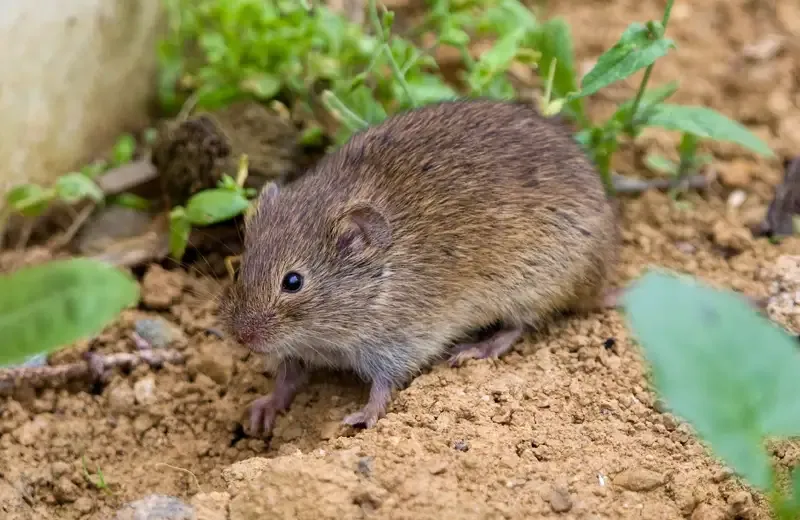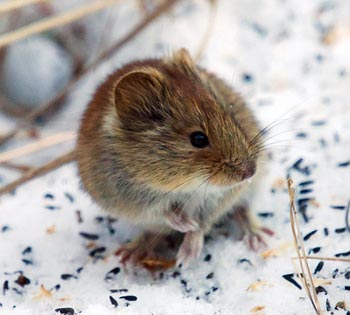Secure Your Lawn: Reliable Vole Control Techniques
Secure Your Lawn: Reliable Vole Control Techniques
Blog Article
Comprehensive Overview to Efficient Vole Bug Control: Invasion Identification and Treatment Methods
In the world of efficient pest control, vole invasions present a special challenge that demands a critical strategy. These small rodents, usually mistaken for computer mice, can damage yards, grass, and plants if left uncontrolled. Identifying the signs of vole existence and executing targeted therapy approaches are crucial components of a successful pest monitoring plan. By checking out the subtleties of vole behavior, recognizing crucial indications of invasion, and reviewing a range of control choices, one can create a detailed approach to fight these evasive pests.
Recognizing Vole Habits
Vole behavior is identified by their burrowing behaviors and fast recreation rates, making them a difficult pest to manage efficiently. These tiny rats commonly produce detailed tunnel systems underground, using them for sanctuary, food storage, and transportation. Voles are herbivores, eating a variety of plants, yards, bulbs, and roots, which can trigger substantial damages to yards, orchards, and lawns. Their fast reproductive price more complicates control efforts, with women with the ability of creating multiple clutters in a solitary year, each having several children.
Voles are most active throughout the very early morning and evening hours, investing most of their time foraging for food. Their burrowing routines not just disturb gardens and grass yet also make them challenging to get rid of and spot. Comprehending vole behavior is important for effective insect control techniques. By determining their burrow locations, monitoring feeding areas, and executing targeted control techniques, such as trapping or environment modification, vole invasions can be managed successfully.
Indications of Vole Problem

Avoidance Techniques
Applying efficient avoidance techniques is crucial in lessening vole problems and safeguarding vegetation from their harmful feeding behaviors. To protect against vole problems, it is crucial to start by getting rid of possible food resources and sanctuary.
Routinely inspecting the residential or commercial property for indicators of vole activity, such as runways see it here and burrow openings, is critical for very early discovery and prompt activity. If vole activity is believed, think about using repellents or catches purposefully put near their pathways.
Non-Lethal Control Techniques
To effectively take care of vole populations while focusing on humane methods, non-lethal control approaches provide useful remedies for minimizing vole damages in landscapes and yards. One efficient method is making use of physical obstacles such as equipment fabric important site or cable mesh to safeguard at risk plants. These barriers can be buried at the very least 12 inches bent and deep at a 90-degree angle to stop voles from burrowing beneath. Additionally, habitat adjustment can hinder voles by decreasing their liked food sources and hiding areas. Keeping a well-mowed lawn, eliminating particles, and maintaining vegetation trimmed can make the atmosphere much less enticing to voles.

Lethal Control Options
One effective approach for attending to vole invasions in yards and landscapes involves the critical use of lethal control alternatives. When encountered with a severe vole problem that non-lethal techniques have actually stopped working to contain, applying deadly control measures ends up being essential. On the whole, when utilizing lethal control choices, it is vital to do check here so responsibly and in accordance with neighborhood laws to effectively handle vole problems.
Final Thought
Finally, effective vole bug control requires a detailed understanding of vole actions, identification of indications of problem, execution of prevention methods, and utilization of both dangerous and non-lethal control methods. By integrating these approaches, individuals can properly manage vole populations and shield their residential property from damages. It is necessary to attend to vole infestations immediately to stop further concerns and minimize the influence on the surrounding atmosphere.
Provided the complex tunnel systems and rapid recreation prices characteristic of voles, recognizing the indications of vole invasion ends up being necessary in reliable parasite control. One of the key indications of vole visibility is the existence of surface runways or trails in turf or snow, usually regarding 1-2 inches broad, created as voles travel between their burrows and food sources.To effectively manage vole populations while prioritizing humane methods, non-lethal control methods use practical services for minimizing vole damages in landscapes and gardens.One efficient approach for addressing vole infestations in landscapes and yards entails the calculated use of dangerous control choices. vole lawn damage.In conclusion, reliable vole bug control needs a comprehensive understanding of vole actions, identification of indicators of invasion, execution of avoidance techniques, and utilization of both deadly and non-lethal control methods
Report this page